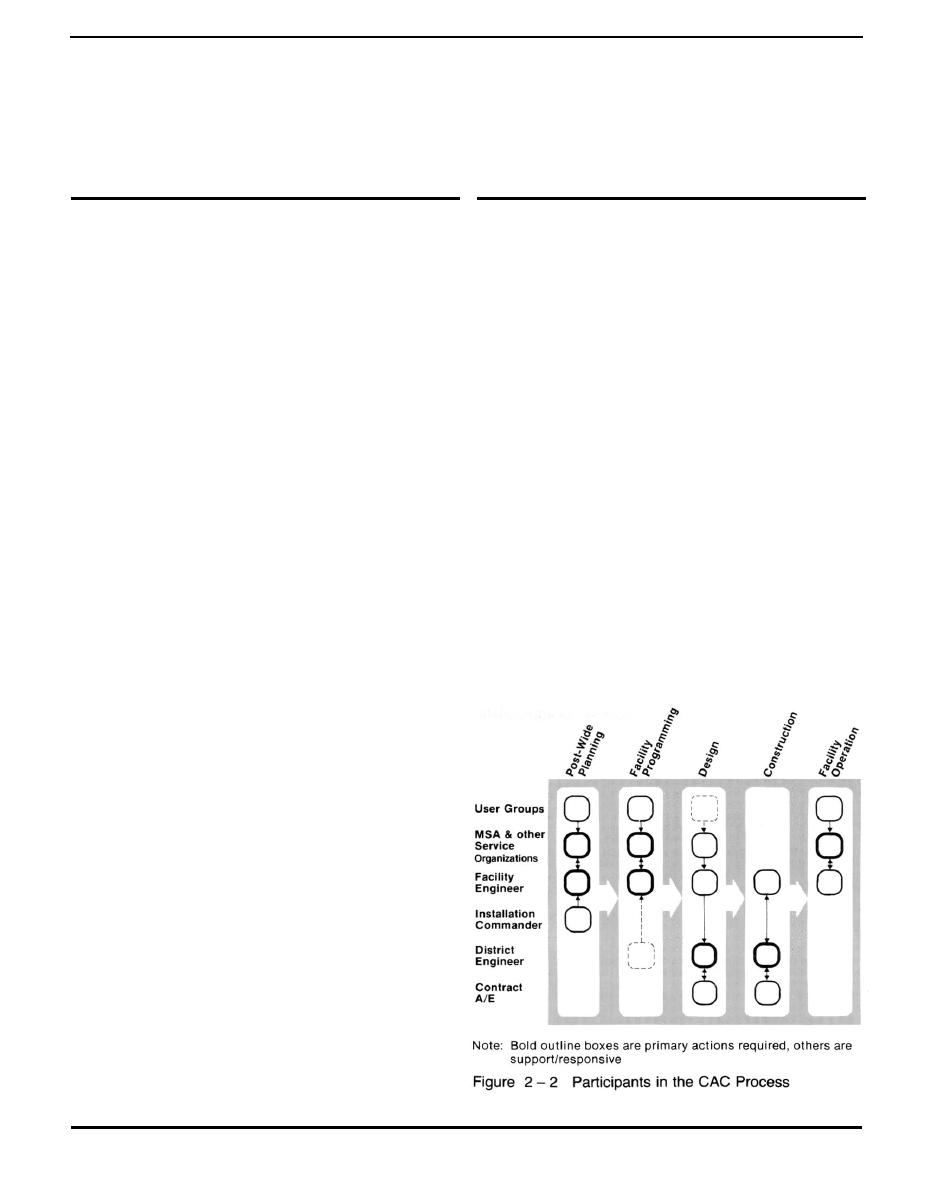
Introduction
2-2
2-3
Format
Responsibilities
a.
Participants in the CAC Process. A sense of com-
The organization of this guide follows the major steps of
planning, programming and design of community facilities
munity can only be developed locally, and local involve-
(see figure 2 - 1). It is designed to assure local input
ment in planning is critical. This Design Guide is
into the development of requirements and solutions
designed for use by all the major participants in the com-
responsive to the local needs of each installation.
munity development process: the users of the services
and facilities, the Morale Support Activities staff and
Chapter 1. Executive Summary. Summary of the major
other service organizations involved in the community
points in the Design Guide.
system, the Facility Engineer and Masterplanner, the
Chapter 2. Introduction. The purpose, format and use
Installation Commander, District and Division Engineers,
of the Design Guide.
the Major Command, and contracted architect/engineer
firms. Figure 2 - 2 outlines the major steps in the com-
Chapter 3. Planning. The goals and principles upon
munity development process and indicates the roles for
which the community planning process should be based;
each participant at each step. A more detailed explana-
step-by-step procedures for planning the community
tion of the planning process and the roles of the partici-
framework; and individual project development proce-
pants is presented in Chapter 3, Planning, and at the
dures and responsibilities.
beginning of each chapter of this Design Guide.
Chapter 4. Facility Programming. Functional and space
programming for Community Activity Centers, oriented
b.
MSA and Other Service Organizations. The role
primarily to Morale Support Activities, with more general
of the Morale Support Activities officers and staff, and
considerations concerning other Morale, Welfare and
other community system organization personnel, is criti-
Recreation functions.
cal to the success of this process and to Community
Chapter 5. Design Considerations. The design implica-
Activity Centers. They have the most comprehensive
tions of consolidation and other design goals, and an
understanding of the population's needs and the pro-
approach for design of consolidated facilities, for both
grams that should be provided. They also can best pro-
new construction and reuse of existing facilities.
ject how programs might work in a consolidated CAC
Chapter 6. Illustrative Designs. Case studies of com-
munity framework planning and Community Activity
Center designs for six hypothetical posts, illustrating a
range of CAC facility types; not definitives to be used
directly at other installations, but illustrative applications
to specific local situations of the planning principles, pro-
gramming criteria and design considerations of this
Design Guide. These include prototypical programs and
designs for CAC's for remote sites with populations of
250 and under.
Chapter 7. Space Criteria: A Guide to the Guides. A
reference catalog of space and relationship criteria for
individual community facility types and their component
areas, excerpted from individual facility Design Guides
and the space authorizations of the DOD 4270.1-M
Construction Criteria Manual.
DG 1110-3-142 Page 2-3


 Previous Page
Previous Page
